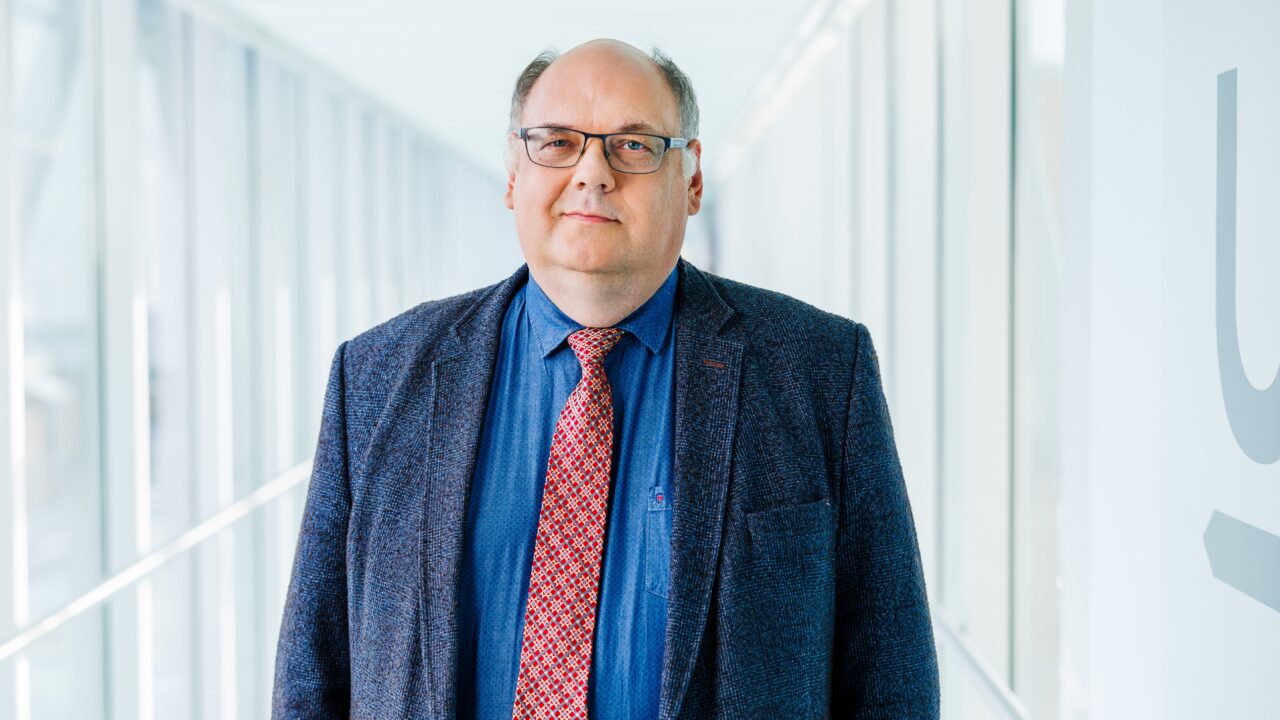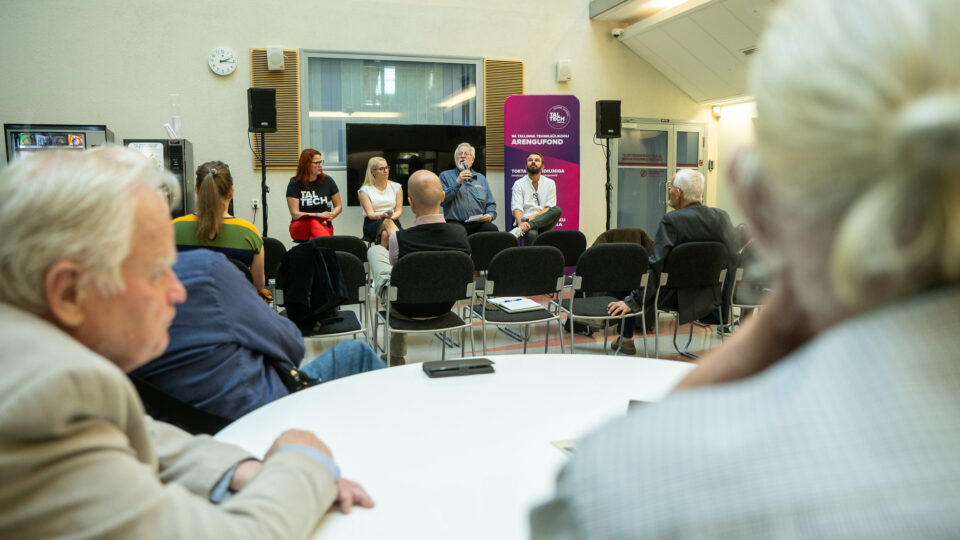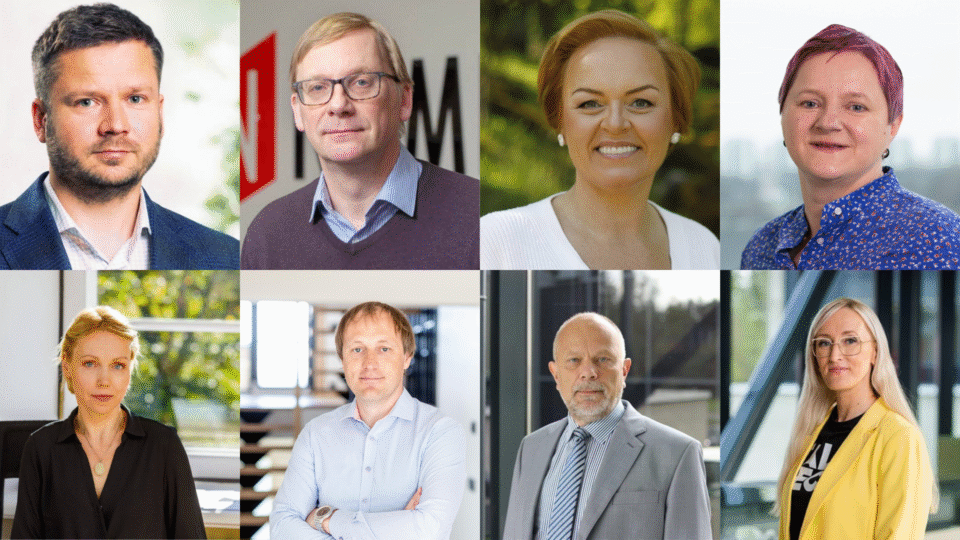Tallinn University of Technology has begun drawing up a new development plan that will set its focus and goals for the coming decade. Vice-Rector for Entrepreneurship, Erik Puura, emphasises that a development plan is not merely a document but a shared agreement on the university’s future direction — how to strengthen engineering education, research, and collaboration with businesses so that TalTech becomes as influential a university of technology as Aalto in Finland or KTH in Sweden. Trialoog spoke with Puura about these plans in more detail.
Development plan or intuition – what is the difference between a university led by the heart and one led by a strategy?
Naturally, a university must be guided by the heart. Yet it faces many choices about which direction to take, and such decisions cannot be made by the rector or the rectorate alone. To be concrete: how should we serve society and strengthen collaboration with businesses? Should we expand or be content with our current position? How can we meet the rapidly changing needs of society and entrepreneurs? How do we harness technological progress, particularly the opportunities brought by artificial intelligence?
These and many other questions require the involvement, consensus, and clear planning of the entire university community. The development plan records those decisions — but equally important is the process itself, which is now entering a more intensive phase as the community becomes more engaged.
What are the main principles behind TalTech’s new development plan?
We have excellent examples among the EuroTeQ universities, especially the technical universities of Denmark, Eindhoven, and Munich — as well as Aalto University and KTH in Stockholm. We are already a recognised and sought-after partner, but reaching their level will take time. One key conclusion follows: Estonia does not need two classical universities, but rather one classical and one technical university — and that technical university should be just as strong as the classical one. As in Finland, where Helsinki University complements Aalto, or in Sweden, where Uppsala pairs with KTH.
In larger countries, such a division of roles is often regional. Estonia is small, which makes the location of the classical university in Tartu and the technical university in Tallinn an ideal setup.
The need to strengthen TalTech coincides with a broader societal and business demand for stronger engineering education. There are, however, some uncomfortable truths: for several key engineering disciplines, we currently lack leading professors. This is not an issue to postpone until the development plan — it requires immediate action. But from there, the plan must outline a larger vision.
Steps are already being taken. Vice-Rector for Academic Development Hendrik Voll has been tasked with launching a supporting fund. The need and the opportunity are both clear — this year’s admissions to the School of Engineering rose sharply. Still, we must remember that the university is an integrated whole; while developing engineering, we must ensure that those in other disciplines do not feel marginalised.
We also need urgent investment in the university’s technical infrastructure. Such investment is scarce at both national and international levels, so we must be prepared to invest ourselves.
Thirdly, entrepreneurs should feel that TalTech is their university. We must strengthen ties with business associations and industry leaders. Our alumni policy already relies heavily on entrepreneurs, signalling that TalTech belongs to them as well. This inspires them to both challenge and support the university.
We, in turn, must adapt our academic career model to better encourage entrepreneurship. Spin-offs should be valued, and researchers involved in them supported in every institute and college — with benefits for the units themselves. TalTech should also lead national networks for technology transfer among universities and research institutions.
Top-level science remains a core priority, forming the foundation of research-based teaching. Yet the research we develop should, in turn, drive societal and economic progress.
Fourth — and perhaps most importantly — our focus must remain on student development, again led by the Vice-Rector responsible for this area. Student life is not only about study; it includes recreation, participation in student organisations, sports, and an active campus community. Sadly, for many students, studying also means working to make ends meet. Managing daily life on their own increases stress and threatens mental wellbeing. Many drop out not because they cannot cope academically, but because life simply becomes too difficult.
In the future, the university should not only be a place for learning, but one that shapes a fuller student experience — offering opportunities to participate in student organisations, sports, and the creation of a distinct TalTech spirit. The Vice-Rector for Academic Affairs is already developing initiatives to strengthen project-based, interdisciplinary, and entrepreneurship-oriented learning. We already have world-class examples such as the student formula team and the solar car project.
We are also planning the further development of our campus infrastructure, the regional strengthening of our colleges, and much more.

Erik Puura. Photo by Raul Mee
How are national and international dimensions intertwined in the university’s goals?
This ties closely to the topic of academic renewal. We want our doctoral students to be able to both speak and teach in Estonian, and we must prevent the loss of teaching capacity as academic staff retire — which, unfortunately, has already begun to happen.
The national dimension also lies in the idea that universities of technology exist primarily to support their country’s economic development. Foreign companies tend to approach us only when their home universities cannot offer the necessary solutions — so we must have something scientifically advanced and unique to spark their interest.
Internationally, we collaborate in research and exchange students with partners across the world. Yet our primary focus remains close cooperation with the EuroTeQ network universities, as well as with our Finnish and Swedish counterparts.
What does the development plan process look like?
A steering committee coordinates the drafting process, involving representatives from the rectorate, the council, students, and support units. The topic was raised already during the rector’s election preparations. Seminars held in Laulasmaa in May and Särghaua in August discussed the university’s future choices. In October, a wider consultation with institutes begins. The Strategy Office plays a harmonising role, while the University Council provides strategic direction.
How does this process differ from previous ones?
Already early this year it became clear that the current development plan is concise, flexible, logical, and strong. Therefore, the main emphasis this time lies not so much on the text as on the core objectives and the means to achieve them. Following guidance from the council, we first focused on identifying key indicators. The council wanted a draft with fewer, more meaningful metrics to track.
On 19 September, the council reviewed the first draft. The next step is to consult the faculties to ensure the indicators are appropriate and to identify any additions needed. The current list awaits council approval, after which we’ll begin a university-wide discussion tour.
How objective or subjective are these indicators?
The steering group agreed that a good indicator must align with the university’s strategic goals, be easy to measure and understand, and be structured as follows: each institute sets its own indicator values, which are then aggregated into university-wide key metrics.
When will the development plan be completed?
By January, the university must already be guided by the new plan in its activities. A Development Plan Conference is planned for February–March next year.
How can you ensure the plan doesn’t just gather dust on a shelf?
When the main goals are tied to measurable indicators, they are continuously reviewed and analysed each year. Many project applications already require consistency with the development plan. Most importantly, once we agree on the key directions, we must actively move in that direction.

Erik Puura. Photo by Raul Mee
How does a university of technology differ from a so-called universal university?
A university of technology is also a research university offering research-based teaching. However, much of its research is applied in nature, contributing directly to social and economic development — in our case, Estonia’s economic development.
The law governing universities of technology also clearly defines our mission:
-
to contribute to research, education, and development work at an international level and to offer innovative services that support sustainable societal progress and national wellbeing;
-
to provide higher education in engineering, technology, natural sciences, and social sciences at all levels, grounded in scientific and technological advancement;
-
and to ensure the next generation of engineers and technical scientists in Estonia.
The objectives of classical universities are not defined as precisely.
How can a large organisation keep pace with change — and what does that mean for TalTech?
We live in a time of accelerating change. The COVID period already feels distant; climate change, once the top concern, has been pushed aside; security challenges have intensified, and the economy is struggling.
Looking at today’s perspectives, three central themes emerge: the digital and AI-driven society, defence and security, and the still-crucial green transition. Perhaps the earlier rush towards a “green transition” that failed to drive economic growth is giving way to a more balanced approach — yet clean industry, a healthy environment, and energy efficiency remain essential for us all.
We do not know what the world will look like even three years from now. That’s why our overall focus must remain broad, aligning with the research, teaching, and innovation across our institutes, colleges, and centres of excellence. Artificial intelligence is already transforming both our teaching and research, as well as the way our support units operate — and this shift is being addressed at the rectorate level.
What should TalTech look like in 2035, and how should it differ from today?
By then, our campus will have renewed itself — we’ll have a major new flagship building, which I provisionally call the III building, symbolising engineering, IT, and innovation. Of course, there should be room for many ideas.
Although we can define the general directions clearly — larger, more international, higher quality, more energy-efficient, more entrepreneurial — we must remain open to surprises. Climate change may not drastically alter our physical environment within ten years, but we must ask how to adapt in the longer term. On energy efficiency, we should aim to set the standard.
Artificial intelligence will change far more than we can yet imagine. Perhaps, in the future, we won’t even need vice-rectors. As for geopolitics — I won’t make predictions. Something entirely new may emerge that will require daily attention, but no one can foresee what that might be.
How can members of the university community contribute meaningfully to the development plan?
October is the month of active engagement: meetings are being held across units, and an online platform is available for everyone to share ideas.
What is the role of external partners?
We will present the main trends and ideas already at the October meeting of the International Advisory Board. Once the first version of the development plan text is ready, we’ll involve entrepreneurs, representatives of business associations, and ministry leaders. For the conference early next year, we’ll also invite our cooperation partners.




